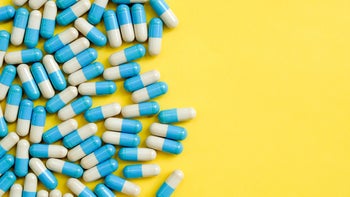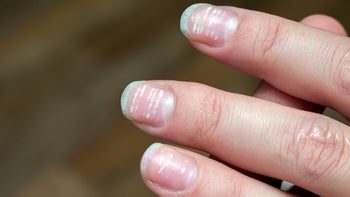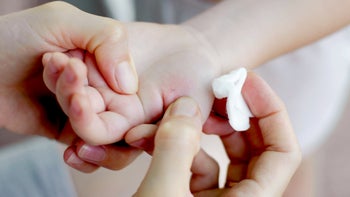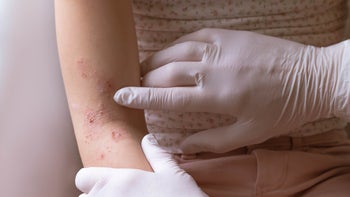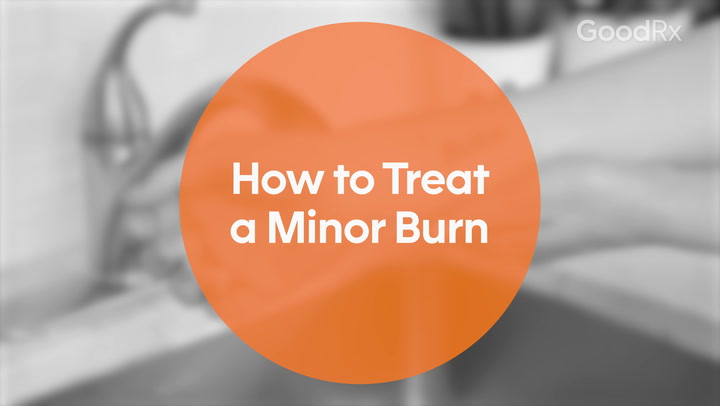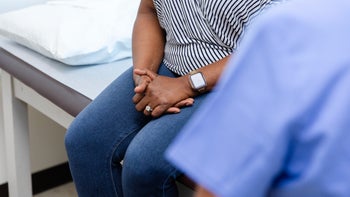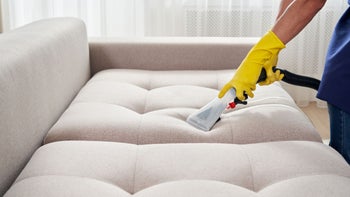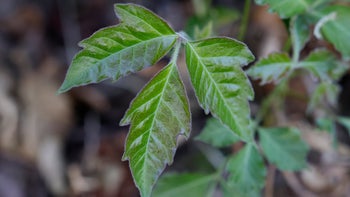
How to Prevent Heat Rash (Prickly Heat): Symptoms and Treatment
Key takeaways:
Heat rash (or prickly heat) develops when the sweat glands are blocked. It’s most common when the weather is hot and humid, which leads you to sweat more.
The telltale symptoms of heat rash include a skin rash that’s red and bumpy.
You can help prevent heat rash by keeping your skin as dry and healthy as possible. This includes staying in a cool environment when you can, wearing loose clothing, and exfoliating daily.
Heat rash isn’t dangerous. It usually goes away on its own in a few days. The sooner you can dry and cool your skin, the quicker it’ll go away.
Table of contents
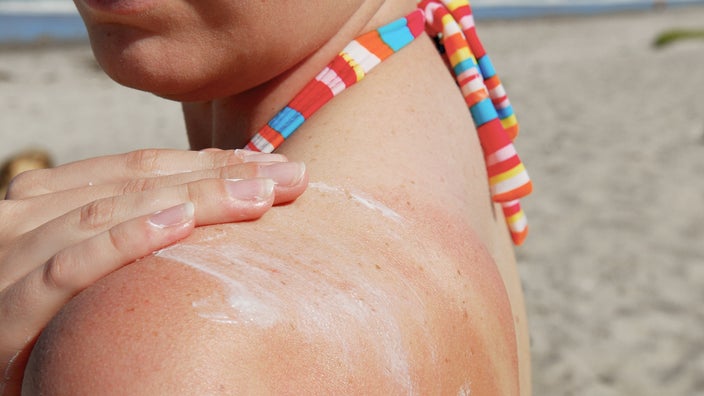
When you develop red, itchy skin, it can be hard to know the cause. A lot of rashes look very similar. But if it’s hot out and you’ve been sweating, there’s a good chance you may have heat rash. Heat rash is caused by blocked sweat glands, which tends to happen in hot and humid conditions.
Some people call it “prickly heat,” and your healthcare professional may call it “miliaria.” Whatever you choose to call it, the good news is that heat rash will eventually go away on its own after your body has cooled down. The even better news is that there are ways to prevent it.
Symptoms of heat rash
Heat rash develops when your sweat glands become clogged. The main symptom of heat rash is red and bumpy skin. You may also feel itchiness or a tingling feeling.
Search and compare options
There are different types of heat rash, depending on the layer of skin that’s involved:
Top layer (miliaria crystallina): This causes very small bumps to develop on the skin, which look like water droplets. They sometimes break open and leak the clear fluid inside them.
Middle layer (miliaria rubra): This is the most common type of heat rash. It involves deeper layers of skin, which leads to larger, red bumps. These bumps are more likely to itch or even cause pain.
Deepest layer (miliaria profunda): This involves the deepest layers of skin. It causes firm, large bumps that are flesh colored. This type usually develops in people who’ve had multiple episodes of miliaria rubra.
What does a heat rash look like?
Heat rash looks like little bumps, usually grouped together in bunches. Sometimes, the bumps are white or clear. On dark skin tones, they might look white or gray. These are very close to the surface of the skin and can leak clear fluid.
Other times, the bumps of heat rash can be more pink or red or be slightly larger. In these cases, the rash is a bit deeper in the skin and might be uncomfortable. Once your skin is affected by heat rash, it might produce less sweat, even in warm environments.
5 general tips to prevent heat rash
Even though heat rash isn’t dangerous, it can be bothersome or even painful. Hot and sweaty conditions are the biggest risk factors, so prevention focuses on these factors.
Here are five ways to prevent heat rash:
Stay cool. It can be hard to avoid the heat in the summer, but do your best to stay in a cool environment. An air-conditioned environment is best, but even a fan or shade can help when you have to be outside.
Wear loose clothing. This can help reduce sweating — it lets air circulate around your skin and keeps it dry. Pay attention to the fabric of your clothing. Light cotton tends to be the most breathable.
Keep the skin dry. Try to keep your skin as dry as possible. In addition to wearing loose clothing, remove skin bandages if you can. Avoid intense exercise that will make you sweat. Change out of wet or sweaty clothing quickly. And avoid skin-to-skin contact.
Practice good skin care. Daily, gentle exfoliation during a bath or shower removes the debris that can clog your pores. You don’t need to scrub very hard. A rough washcloth works fine. Soap can irritate the skin, so sometimes just a washcloth is best.
Take a cool bath or shower. When your skin starts to feel hot, the quickest way to cool it down is with cool water. A bath or shower is the best for skin, but even a dip in a pool can help. Just be sure to dry off afterward.
Sunburn vs. sun poisoning: Soaking up the sun can feel great, but it’s easy to overdo it. Learn the differences between sunburn and sun poisoning and how to prevent them.
Sun allergies: Sunlight can cause an itchy and painful rash in some people. Learn more about solar urticaria here.
Common rashes in kids: There are many causes of rashes in children, including heat rash. These images can help you tell them apart.
What can I put on my skin to prevent heat rash?
Avoid putting anything on your skin if you’re prone to developing heat rash. Ointments and creams can actually clog your sweat glands even more. Use fragrance-free and gentle soaps when bathing. These are less likely to clog sweat glands.
Antiperspirants can sometimes help prevent heat rash, but watch out for ingredients that cause irritation. And make sure to avoid deodorants that don’t contain an antiperspirant. These can clog your pores without providing the benefit of reducing your sweat level.
How to prevent heat rash on your face, neck, and body
Heat rash isn’t usually anything to worry about, but it can be annoying. If you want to keep heat rash from happening, here are some things you can try.
Read more like this
Explore these related articles, suggested for readers like you.
Preventing heat rash on the face
Heat rash doesn’t usually happen on the face. So, when it does, it’s often confused with other things. Sunburn or sun allergy (solar urticaria) can cause redness of the face after exposure to ultraviolet (UV) light. Certain medical conditions, like lupus, can also cause a rash on the face after exposure to the sun.
But it’s important to remember that heat rash is a reaction to sweating, not sunlight. Here are some helpful things you can do to prevent heat rash on the face:
Use cooling measures, like water sprays or cooling towels, to reduce sweating when it’s hot out.
Stay in the shade when you can, and consider wearing a light-colored hat.
Wearing a mask can also increase the risk of heat rash developing on your face. If you need to wear one, find one that’s light and not too tight.
If heat rash on the face is a frequent problem for you, consider adding gentle skin exfoliation to your routine. Keeping your facial skin clear of dead skin cells and bacteria can help keep the sweat glands healthy.
Preventing heat rash on the neck
Unlike the face, the neck is a common site for heat rash. That’s because the neck tends to be a sweaty area, especially while exercising. Here are some tips to prevent heat rash on your neck:
Avoid tight or heavy clothing that could increase sweating in that location.
Place a cooling towel or cool compresses around your shoulders when you’re out in the heat.
And keep your skin as clean as possible.
Preventing heat rash on the body
Heat rash on your body most often shows up in areas that don’t get exposed to fresh air. This includes:
The armpits
Groin
Under the breasts
In skin folds
To prevent heat rash on your body, do the following:
Wear light, airy clothing.
Avoid spending long periods of time in hot environments.
If you do, change position often so your skin stays dry.
At night, make sure your bedding is cool and moisture wicking.
Transdermal medication patches, like a nicotine patch, can contribute to heat rash on the skin beneath the patch. Areas of the skin that are wrapped, taped, or bandaged can have the same problem. Consider taking extra steps to keep the skin cool in these areas.
Preventing and treating heat rash in babies
Young babies are particularly prone to heat rash because their sweat glands are immature. Prevent heat rash in babies by dressing them in loose, light clothing when the weather is warm.
Indoors, where UV light exposure is less of a problem, young babies might not require much clothing at all. Avoid spending long periods of time in hot environments with young babies. And look for shady areas when you’re outside. Wear what feels weather appropriate to you, and dress your baby similarly.
Since babies are prone to different types of rashes, it’s best to contact their pediatrician to confirm the best treatment.
Heat rash vs. other types of rashes
Since different rashes often look the same, it can be hard to know what rash you have. But heat rash has some specific features that can help you tell it apart from other rashes:
It develops in hot, humid conditions. So, if you develop a rash outside of these conditions, it may be something else.
In babies, heat rash is common around the neck, underneath the arms, and in the diaper area. It may also appear on the back or chest if the baby has been lying on a warm surface for a long period of time. Babies get many different types of rashes. So, it’s best to visit a pediatrician if a rash doesn’t go away quickly — or if it seems to hurt or be linked to other symptoms.
In adults, heat rash develops in skin folds or where clothes rub against the skin, like under the arms, behind the knees, in elbow creases, and the groin. In some cases, it can develop on the torso. These areas are also prone to yeast (candida) infections, and it can be difficult to tell the two apart. Talk with a healthcare professional if your rash doesn’t improve after a day or two — especially if it gets worse after you’ve stopped sweating.
Frequently asked questions
Heat rash can affect anyone. But it’s common in babies and infants younger than 2 to 3 weeks old. That’s because they can’t regulate their temperature as easily as adults. But it can affect anyone at any age.
Heat rash generally goes away after a few days. It may go away sooner if you’re able to cool and dry your skin quickly after noticing that you have it. If your heat rash persists for longer than 3 to 4 days, speak to a healthcare professional.
Although heat rashes can be very annoying, they’re typically harmless. Most go away on their own. Very rarely, heat rashes can persist and might need treatment from a healthcare professional.
Heat rash can spread from one place on the body to another, but it’s not contagious. So, for example, you won’t get it from touching or changing the clothes of a child who has it. And they won’t get it from you.
No. Sunscreen is designed to prevent UV damage to skin and doesn’t affect sweating. Since heat rash is caused by clogged sweat glands, there’s a small chance applying sunscreen could make it worse.
The bottom line
If you get red, itchy bumps during the summer or after you’ve been sweating, you may have heat rash. While it can be annoying, it’s generally harmless and goes away on its own after a few days.
The best way to prevent heat rash is to keep the skin as dry, cool, and clean as possible. So, take frequent breaks from the sun or heat to cool down, avoid wearing tight clothing, and avoid places and situations that will lead to excessive sweating. This will keep your skin happy and rash-free — even in summer heat.
Why trust our experts?



References
Guerra, K. C., et al. (2024). Miliaria. StatPearls.
Loo, M. (2009). “Chapter 40 - heat rash.” Integrative Medicine for Children. Elsevier.
Oakley, A. (2020). Miliaria. DermNetNZ.
SweatHelp.org. (n.d.). Heat rash. International Hyperhidrosis Society.






